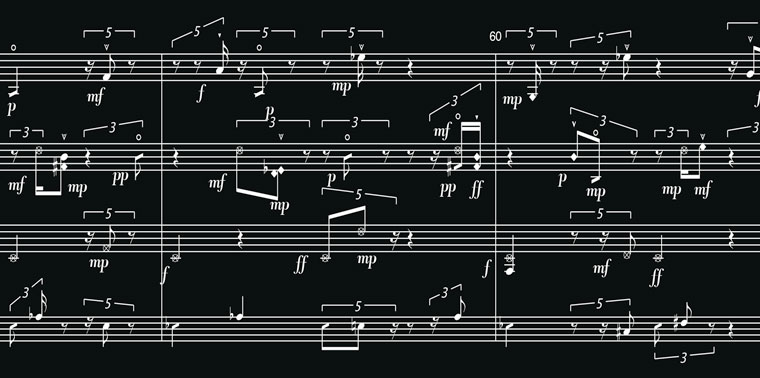Sagra Malatestiana 2007 – Review

In the “Workshop” of Luigi Ceccarelli, the composer with an urban taste
“Neuromante” for alto sax, “Quanti” and “Birds” for clarinet, “De zarb à daf” for percussion, “Anima di metallo” for drums and metals ……. At the Malatesta Music Festival
The Sagra Musicale Malatestiana has reached its 58th edition this year. Famous conductors such as Temirnakov and Metha, consolidated repertoire, great influx of public. But could the very up-to-date city of Rimini not dedicate a monographic space in this very traditionalist review to an author of today? Possibly original, non-academic and non-conciliatory or slyly eclectic? No. It couldn’t. This year the choice was particularly happy: it fell on Luigi Ceccarelli. A composer who writes on the computer using sampled sounds (and synthetic sounds) but reserving juicy parts for the soloists of acoustic instruments in live performances of his scores. A composer with a very “urban” taste, capable of being enthralling, even epidermal, but refined and rich in thought.
At the Teatro degli Atti the first soloist to appear is Marco Gerboni with his alto. The work is called “Neuromante” (1992). Immediately Braxtonian phrasing and an initial structure for short “chapters”. Moreover, the procedure with truncated episodes, not traumatically, but rather in a serene way and with some hints of “solution” on a note that acts as a tonic, is one of Ceccarelli’s favorites.
Neuromancer goes on, remaining there for a long time, in the exasperation and interaction of post-jazz phrases (one continues to think of Braxton), then in openings towards lyric-sidereal spaces. Throughout the length of the piece the soloist’s sounds are multiplied, surrounded, lapped, slightly contrasted by a series of “doubles” circulated by electronic devices. Why “doubles”? Because they are sampled sounds of the whole family from the sax with a privilege given to the low registers.
This criterion of elaborating a polyphony or a dialogue between soloist or simple ensemble sounds often of rhythmic value with timbrically similar sounds, is what we find in all the works, with less evidence only in Anima di Metallo. In Quanti (1990) we have a real “environment” of sampled clarinets that is outlined around the solo clarinet Paolo Fantini. A very cordial, tender piece: a loving meeting in which the self seeks itself meets questions itself with a certain satisfaction of its own colloquial nature.
Birds (1993) presents a novelty. The bass clarinet soloist Fabio Bertozzi is not enveloped and supported only by the usual “artificial” interlocutors of his own sound constitution, but crosses sampled sounds from the natural world, birds chirping in particular. The reason is clear: the piece is part of the ballet Naturally Tua signed by Ceccarelli with the choreographer Lucia Latour, inspired by the theme of nature treated in a disenchanted and paradoxical way. For the concert version we would have preferred that these “naturalist” and descriptive interlocutions were omitted, especially since most of the sound itinerary is made up of magnificent tight paroxysmal iterations, from magnificent “ostinato” in which the instrument is used with a percussive method.
De zarb à daf (1997) is the incessant proliferation of percussive sounds. It surprises, fascinates, conquers. Zarb and daf are the names of traditional Persian drums, used live by the Iranian soloist (now a French citizen) Mahamad Ghavi Helm who gave his sounds to Ceccarelli’s samplers. A formidable score came out. The echoes of an archaic musical culture are undeniable, but here there is the whole metropolis that is seething, which is innervated by conflicts and multiple subjectivities. Ceccarelli’s magic machines divide the beats, dilate them, enter seismic zones, evoke an Elvin Jones or a Hamid Drake in the cube.
It is logical that the concert is closed by Anima di Metallo (1990) with the trio of the Ars Ludi ensemble on stage (Antonio Caggiano, Rodolfo Rossi, Gianluca Ruggeri). Instruments of the Indonesian Gamelan produce first pointillistic sequences then deflagrations. But always of deaf, workshop sounds. Obviously the electronic control unit enriches, expands, differentiates to the maximum. Wide spaces to the regular, square scan, but each set of beats is a microcosm of timbres and refractions. And soon the “arrhythmia” of the start resumes. To conclude on a telluric mix of drums and metals.
(Mario Gamba – Il Manifesto 6 ottobre 2007)
